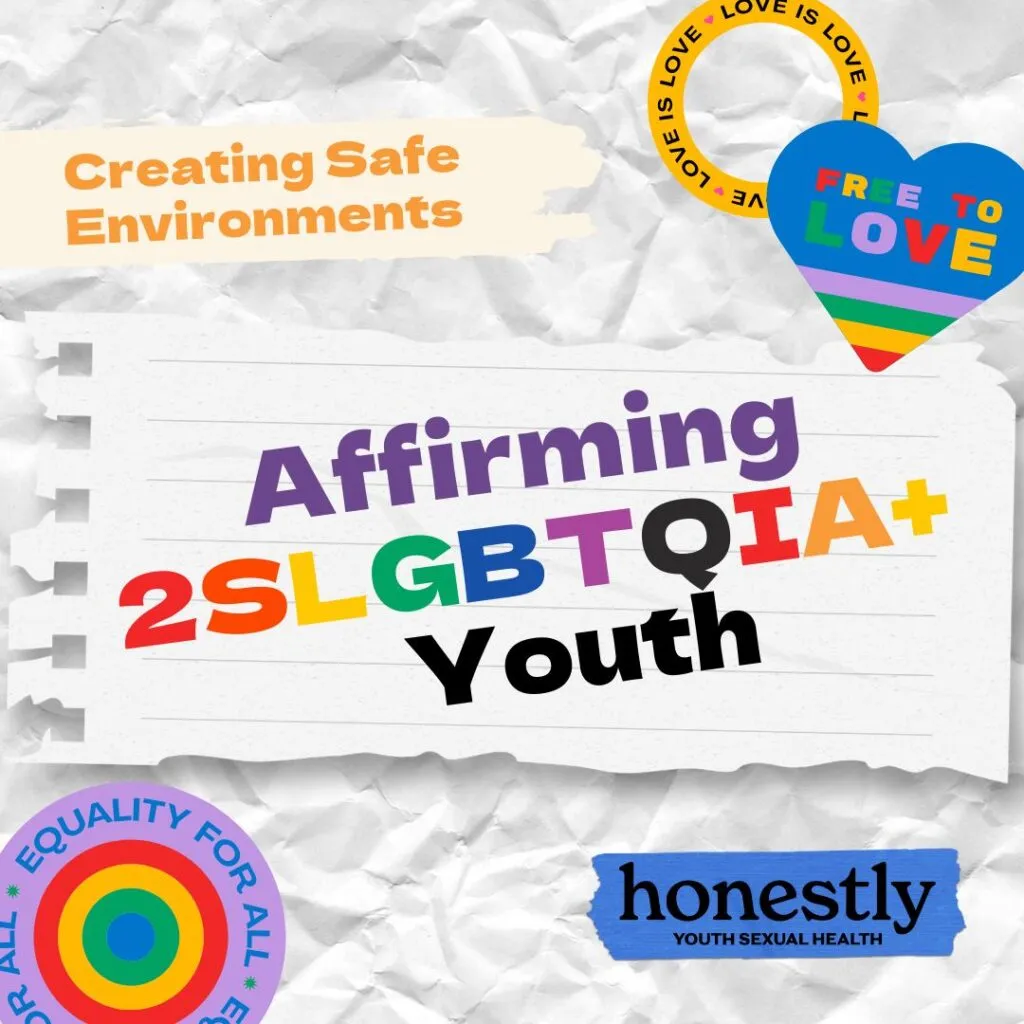2SLGBTQ+ youth face greater risk for disconnection in schools, at work, and at home. Caregivers and trusted adults can make these spaces more inclusive and welcoming by creating affirming environments for 2SLGBTQ+ youth.
The Current Environment for 2SLGBTQ+ Youth
A personal sense of safety can be heavily impacted by someone’s mental health and their capacity to access mental health resources. According to the Trevor Project, 54% of LGBTQ+ youth who wanted mental health care in the past year were unable to receive it. Of those:
- 53% reported inability to afford care as the primary barrier.
- 36% cited not wanting to get parental permission as a barrier.
- 22% worried about being outed.
- 20% felt providers wouldn’t understand their sexual orientation or gender identity.
Additionally, and especially for youth with 2SLGBTQ+ identities and experiences, the social and political climate can either support a sense of safety or create a hostile environment. 90% of LGBTQ+ young people said their well-being was negatively impacted due to recent politics.
Intersectional identities can heighten disparities in access to mental health services. Black (62%), Latinx (62%), and Asian American (60%) LGBTQ youth reported significantly higher levels of not receiving desired mental health care compared to white youth (53%). Ultimately, this means disparities contribute to even greater increased feelings of danger and risk among 2SLGBTQ+ youth of color.
Creating Safe and Affirming Environments for 2SLGBTQ+ Youth
Our CEO, Jessica Kobylinski, held a training earlier this year on creating affirming environments for 2SLGBTQ+ youth. She focused on 5 strategies and offered tangible examples of how these make an impact and how to begin implementing these changes. Whether you’re a parent or youth-serving adult in a professional setting, or any adult who knows a young person, these actions may be helpful to successfully creating safe spaces for young people.
- Establishing a culture of learning
It’s important to admit when you don’t know everything and to educate yourself on different terms, community resources, etc. Establishing a culture of learning means we can own up to mistakes and show young people that we are committed to doing all we can for them to be happy and healthy.
- Provide training to youth serving adults
This strategy is geared more for professionals, but parents can also benefit from knowing the local resources and sharing them with other parents/caregivers. And it’s not only about knowing what resources are out there but connecting young people to them!
- Establish policies that protect 2SLGBT+ youth
The first step to ensuring a policy is helpful for 2SLGBT+ young people is understanding protective factors. Young people thrive when they have access to culturally competent providers, affirming support, positive representation, supportive environments, and peer networks. With these in mind, and with a clear understanding of state and local policy limitations, create programs, classroom rules, house rules, and community guidelines around these protective factors.
- Learn, practice, and model affirming language and care
This might sound daunting, but it’s as simple as using the language they use and the language that they request you use. If you find it difficult to get used to, it’s still important to show that care and effort. Inclusive language and practices can go a long way — but be sure these practices are not performative. Sometimes practices can seem like allyship but are actually harmful. For example, requiring everyone to provide their pronouns may put a young person in a position to out themselves before they are ready or draw unwanted attention if they are the only person using pronouns different from their gender expression. Which brings us to the last and most important point…
- Listen to young people who hold these identities
Each individual is going to be the best expert on themselves. It’s okay to ask appropriate questions about their lived experience and give them the space to be the expert on their own feelings, but we never want to make a young person feel responsible for educating an adult. It’s also helpful to understand the barriers a 2SLGBTQ+ person may face when it comes to accessing care, including the lack of resources, cost, fear of stigma, and concerns about confidentiality – just to name a few. If you want to help, ask how you can assist them in overcoming these barriers and follow through how you can.

